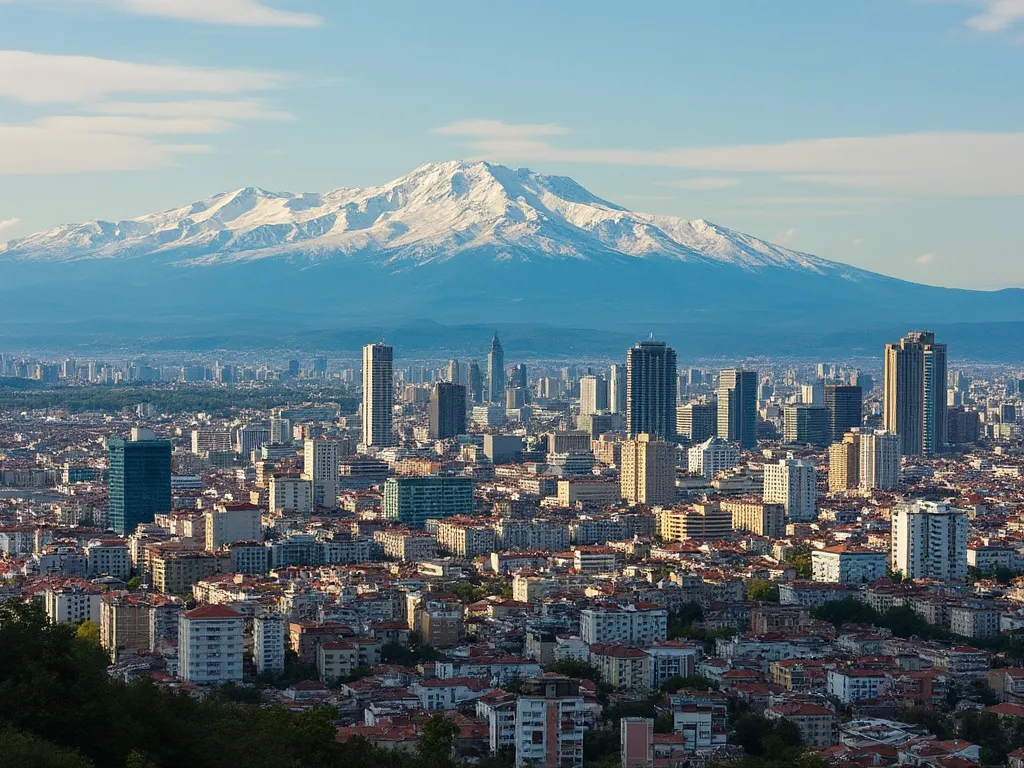
Skopie, la capital de Macedonia del Norte, es una ciudad con una rica historia y patrimonio cultural. Ubicada en el norte del país, Skopie está situada en el valle de Skopie, rodeada de montañas y colinas. La ciudad tiene una población de más de 540,000 personas, lo que la convierte en la ciudad más grande de Macedonia del Norte.
Información sobre Skopie
| País | 🇲🇰 Macedonia |
| Población | 544,086 (estimación 2020) |
| Coordenadas | 42°00′N 21°26′E |
| Área | 571.46 km² (220.64 mi²) |
| Clima | Clima continental húmedo (clasificación climática de Köppen: Cfa) |
| Idioma | Macedonio (oficial), Albanés, Turco, Romaní, Serbio, Bosnio |
| Moneda | Denar macedonio (MKD) |
| Zona horaria | Hora Central Europea (CET) (UTC+1) |
| Proximidad a otras ciudades importantes | Belgrado (Serbia) - 440 km (273 mi), Sofía (Bulgaria) - 210 km (130 mi), Tirana (Albania) - 290 km (180 mi) |
Datos interesantes sobre Skopie
- Skopie alberga el bazar más grande de los Balcanes, con más de 2,000 tiendas y puestos.
- La ciudad tiene una mezcla única de arquitectura antigua y moderna, con muchos monumentos históricos y edificios modernos.
- Skopie alberga muchos museos, incluido el Museo de la Lucha Macedonia, la Galería Nacional de Macedonia y el Museo de Arte Contemporáneo.
- La ciudad organiza muchos festivales a lo largo del año, incluido el Festival de Jazz de Skopie, el Festival de Cine de Skopie y el Festival de Verano de Skopie.
Atracciones turísticas en Skopie
- Fortaleza Kale: una fortaleza medieval que data del siglo VI.
- Iglesia de San Demetrio: una hermosa iglesia ortodoxa que data del siglo XVIII.
- Mezquita Mustafa Pasha: una impresionante mezquita que data del siglo XV.
- Bazar Viejo: un histórico bazar con más de 2,000 tiendas y puestos.
- Cruz del Milenio: una gran cruz que ofrece impresionantes vistas de la ciudad.
Antecedentes históricos de Skopie
Skopie tiene una larga y compleja historia, con varios imperios y civilizaciones que han gobernado la ciudad a lo largo de los siglos. La ciudad fue fundada por los antiguos griegos en el siglo III a.C. y más tarde se convirtió en parte del Imperio Romano. En la Edad Media, Skopie fue un importante centro de comercio y comercio, y fue gobernada por el Imperio Bizantino y el Imperio Otomano. En el siglo XX, Skopie se convirtió en parte de Yugoslavia, y después de la disolución del país, se convirtió en la capital de la República independiente de Macedonia.
Ubicación geográfica de Skopie
Skopie está ubicada en el norte de Macedonia del Norte, en el valle de Skopie. La ciudad está situada en la confluencia de los ríos Vardar y Treska, y está rodeada de montañas y colinas. La ubicación geográfica de la ciudad la ha convertido en un importante centro de comercio y comercio a lo largo de la historia.
Significado cultural de Skopie
Skopie es una ciudad con un rico patrimonio cultural, con una mezcla de arquitectura antigua y moderna. La ciudad alberga muchos monumentos históricos, incluida la Fortaleza Kale, la Iglesia de San Demetrio y la Mezquita Mustafa Pasha. Skopie también es conocida por su vibrante escena cultural, con muchos museos, galerías y festivales a lo largo del año.
Importancia económica de Skopie
Skopie es el centro económico de Macedonia del Norte, con un fuerte enfoque en la industria, el comercio y el comercio. La ciudad alberga muchas empresas importantes, incluidas las industrias textil, alimentaria y de la construcción. Skopie también es un importante centro de transporte, con un importante aeropuerto internacional y una red de carreteras y ferrocarriles que conectan la ciudad con otras ciudades importantes de la región.
Conclusión sobre Skopie
En conclusión, Skopie es una ciudad con una rica historia, patrimonio cultural e importancia económica. La ciudad ofrece muchas atracciones turísticas, incluidos monumentos históricos, museos y festivales. Ya sea que esté interesado en la historia, la cultura o el entretenimiento, Skopie tiene algo que ofrecer para todos.
 Sofía
Sofía
 Tarawa
Tarawa
 Seúl
Seúl
 Singapur
Singapur